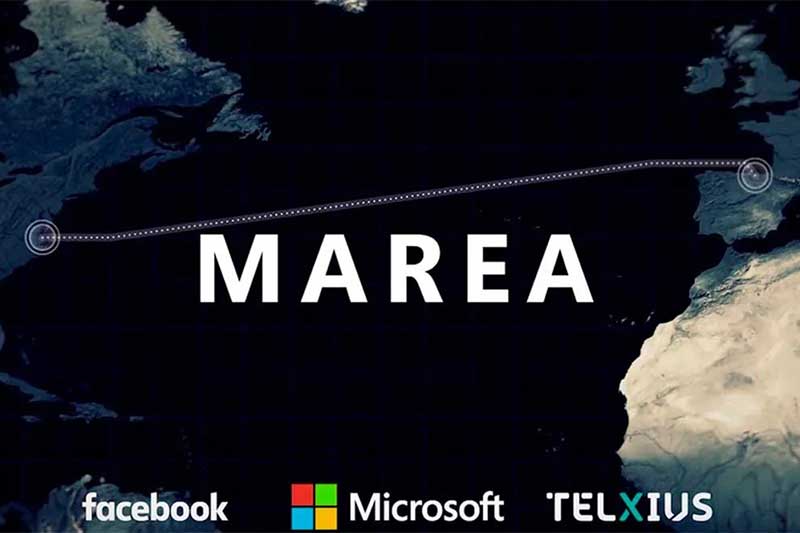Some facts about the internet you should know
The development of the Internet of science and technology is a history of changes from wired to wireless.
In the 1980s and 1990s, we could only dial-up internet via telephone lines. Now cellular networks and WIFI allow everyone to connect to the digital world anytime, anywhere.
On mobile phones, the most commonly used Internet devices, we have become accustomed to wireless transmission and the disappearance of the headphone jack. Now wireless charging is trying to cut off the charging cables.

The Internet has connected the world wirelessly, allowing people thousands of miles away to talk face to face. Is this the case?
The Internet world has never been “wireless” but is connected by countless submarine optical cables all over the deep ocean. If one is broken, you may not even be able to send it to WhatsApp Messages.
How Optical Submarine cables connect to the global Internet
The Internet in our impression is often an invisible and intangible virtual world. The real Internet world looks like this:

This is about 380 submarine optical cables distributed all over the world, with a total length of more than 1.2 million kilometers, and can go around the earth 30 times. Except for Antarctica, submarine optical cables connect the Internet on all continents on the earth.
These submarine optical cables are responsible for more than 95% of the world’s international data transmission, just like the capillaries of the Internet.
We can make video calls with family members in foreign countries and at home, and we can watch live broadcasts of international sports events such as the Premier League and NBA on our mobile phones, all of which depend on these deeply buried optical cables.
When you and I sent a video to a friend in New York on a mobile phone in India, the data of this video was accepted by a nearby base station, and then passed through the computer room, the data center, and then crossed the Pacific Ocean on the submarine optical cable, and finally was received by the friend in New York. facts about the internet
The entire distance is as long as 15,000 kilometers, which can take only 1 second. The submarine optical cable is the highway for data transmission in the Internet world.
Facts about the Internet: Did You Know?
- Fastest Optical Submarine Cable – Marea
At present, the fastest transmission speed of the submarine optical cable is Marea, which spans 6,600 kilometers across the Atlantic Ocean. It was jointly developed by Microsoft, Facebook, and the telecom infrastructure company Telxius, and theoretically can transmit up to 160 TB of data per second.

What is the concept of 160Tbps? This data transmission speed is 16 million times that of general household broadband, which is equivalent to the simultaneous transmission of 71 million high-definition movies.
Other Facts about the Internet Cable
- Longest Optical Submarine Fibre Cable – SEA-ME-WE3 or South-East Asia – Middle East – Western Europe 3
Since submarine optical cables have to connect different countries on several continents, their lengths generally start at thousands of kilometers. The longest one is the Asia-Europe III submarine cable (SeaMeWe-3), which runs from Norden, Germany in the west and Okinawa, Japan in the east, spanning 39,000 kilometers and connecting four continents.

Submarine Optical Cable is almost Responsible for the Communication of the entire Global Internet
You might say, why can’t you use satellites to transmit data like in the past, and Musk’s SpaceX is still building a satellite Internet that covers the world?
But in fact, satellite transmission is far from replacing submarine optical cables.
Not to mention that the transmission distance of satellites in low earth orbit is longer than that of submarine optical cables, and it cannot carry the huge capacity of the Internet. The communication capacity of submarine optical cables is more than 1,000 times that of satellites, and satellites are more susceptible to weather conditions.
Therefore, considering transmission efficiency and cost, the submarine optical cable is the best choice for Internet communication.
According to, an expert from the transmission planning department of the Ministry of Information Industry, in all-optical cable communications, Internet communications account for more than 90% of the bandwidth. Only a small part is transmitted via satellite.
It is precisely because the submarine optical cable is almost responsible for the communication of the entire global Internet, once it fails, the consequences may be unimaginable.
Have you ever wondered what can happen when Optical Submarine Fibre Cable get Damage

For example, the 2006 Taiwan earthquake caused 13 submarine optical cables in the sea to break, which directly prevented Chinese users from accessing the internet for a month. At that time, the number of Chinese users was only 130 million.
In 2013, a group of bored men dived into the sea and cut off the Southeast Asia-Middle East-Western Europe No. 4 optical fiber cable, causing the Internet speed in Egypt to drop by 60% in an instant.
If such a thing happens today, it is impossible to imagine how our lives will be affected.
These submarine optical cables connect our Internet world. A word, a picture or a video you receive in the dialog box, and every frame you see on Netflix and YouTube may span thousands of miles under the deep sea. Just appeared on your screen.
People Also Ask
How old is the Internet today?
30 Years Old
Who invented the Internet?
Robert E. Kahn & Vint Cerf
You May Like These Articles
